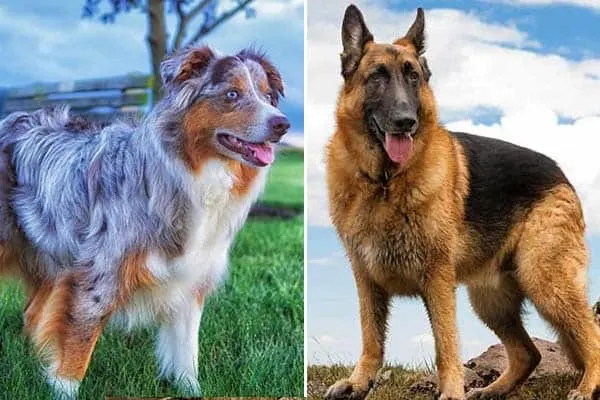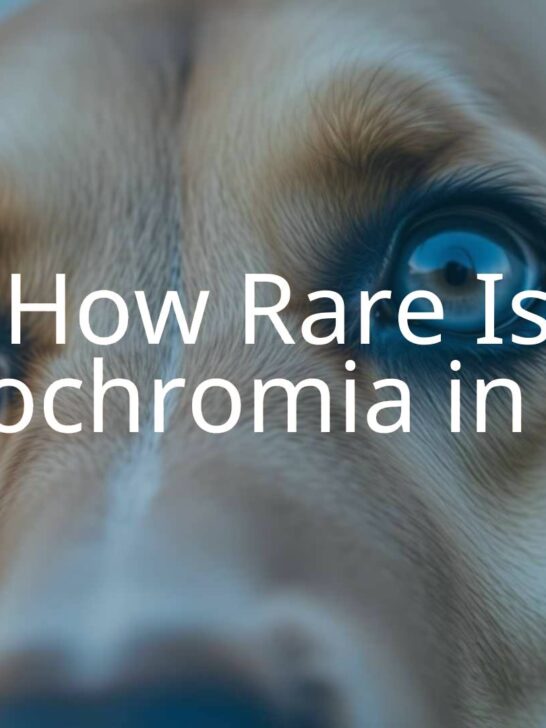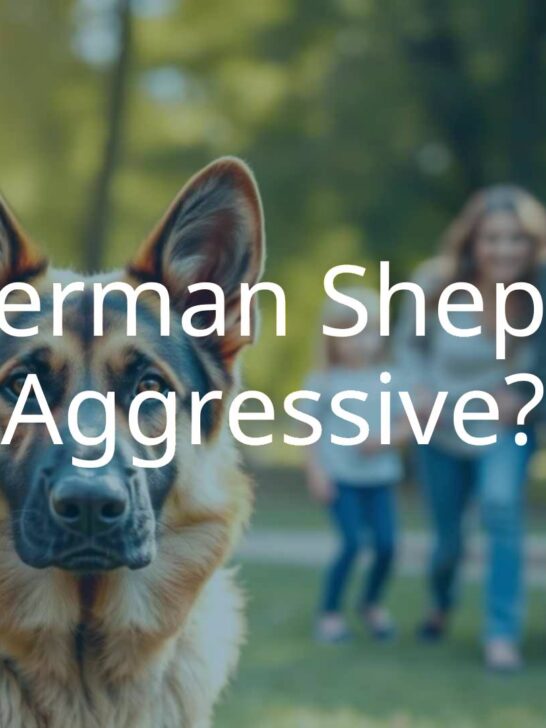Australian Shepherd German Shepherd Mix: The Complete Guide You Need
If someone mentioned the German Shepherd dog, what are the first things that come to mind? You might think of the police force or drug enforcement.
Maybe you would picture the dog next door who so ferociously defends the yard. Or perhaps a show dog pops up.
What if that same person asked you what a German Shepherd and Australian Shepherd had in common? Things like agility, intelligence, and herding might come to mind.
Finally, what would you imagine if asked what the result of an Aussie German Shepherd cross would be?
A German Shepherd Australian Shepherd Mix combines two popular herding dogs.
Despite their different backgrounds, appearances, and personalities, the Aussie and the Shepherd have a lot of similarities as family pets.
Also known as a German Australian Shepherd, the cross between an Australian Shepherd and a German Shepherd produces an uncommon designer dog who is smart, social, trainable, affectionate, and athletic.
Australian Shepherd German Shepherd Mix: What Is So Special About the Herding Group?
Although not everyone can handle the intensity and energy of dogs from the herding group, they can’t deny their attraction.
Herding dogs as a class are highly intelligent, fast and agile, and appealing in appearance and movement. It’s difficult not to be mesmerized by a herding dog at work, whether in the show ring or the field.
According to Leerburg, The German Shepherd, hailing from the hills of Germany, once herded sheep as their main profession – by gripping and moving them rather than nipping.
In anticipation of the declining demand for herding dogs, Max von Stephanitz spent 35 years perfecting the breed and instilling in it a remarkable work ethic and versatility.
Aussie breeders claim that the United States developed the Australian Shepherd from dogs that originally came from Basque settlers moving from the Pyrenees Mountains of Spain and France, along with sheepherders from Australia.
Ancestors of the Australian Shepherd include the Old German herding dogs or Tiger dogs, English shepherds, Australian Koolies, and the Spanish shepherd or Carea Leone.
Although Border Collies are closely related to Aussies, experts don’t agree on their influence on Australian Shepherd lines.
German Shepherds and Aussies both possess high energy, versatility, as well as the ability to move efficiently and at high speeds.
What major character traits might your Aussie-Shepherd mix inherit?
Your German Shepherd Aussie will likely range from 20 to 23 inches tall and weigh 50 to 75 pounds.
This falls somewhere in between a short Aussie, who stands about 18 inches tall, and a large GSD standing at 26 inches tall.
This hybrid can display several traits from either side. Their muzzle might be a little long like a Shepherd’s, or the head might be round like an Aussie’s.
This dog will exhibit a stride between the efficient long ground-covering trot of the GSD, and the quick snappy bounce of the Aussie.
German Shepherds have a long powerful tail whereas an Aussie’s tail is full, and often curls over the back or naturally bobs. The mixed breed usually has a long and plush tail.
Australian German Shepherds may have a moderately long body but will be proportionately shorter from shoulders to hips than a pure Alsatian.
Aussie mixes could have eyes from brown to hazel to blue, and their ears will likely be larger than an Aussie’s but less upright than a GSD’s since the Australian Shepherd’s pinnae fold forward.
The fringes of hair from the ears are common in the German Shepherd Australian Shepherd Mix.
Note the interesting combination of traits in this dog. The facial resemblance is uncanny – if not for the merle coloration and hazel eyes, this friendly-looking dog could pass for a German Shepherd.
What Colors Will This Mix Potentially Have?
German Shepherd
- Solid color (tan, red, or blue) and black – black is extensive, classically in a saddle distribution across the back, and on the face and muzzle as a mask.
- Sable – an agouti pattern whereby hairs are banded with multiple colors. One of the most common colors in wild animals, like wolves, agouti involves shades of gray, red, and brown.
- Solid colors – blue, silver, white, black, and liver.
Australian Shepherd
- Solid colors – red or black.
- Merle – red or blue. Merle dogs have a marbling effect or spots in a stereotypical pattern.
- Bicolor – red and white, or black and white.
- Tricolor – red or black; Tricolor dogs will have white and tan in a stereotypical pattern.
- Black and tan or red and tan.
German Australian Shepherd
- Black and tan or red and tan.
- Solid – black, red, blue, tan, or cream.
- Brindle.
- Bicolor – black and white or red and white.
- Tricolor like an Aussie – Black and white with tan points.
- Merle – usually black.
- White with red or black spots or specks.
The German Shepherd Australian Shepherd hybrid adds colors, like brindle, that aren’t present in either of the parent breeds. You may also see unusual patches such as gray or silver on a tricolor dog.
This litter of pups demonstrates the variety of colors you can see with the mix, and how unpredictable coat patterns can be.
As might be expected, the predominant colors appear to be more so black and tan.
German Shepherd Australian Shepherd Mix: What to know about Coat Length and Grooming?
German Australian Shepherds tend to have moderately long thick fur with a substantial undercoat.
Some have a short outer coat with fringes of longer hair around the face and tail, reminiscent of an Aussie’s feathering.
Brush your Shepherd mix at least weekly, if not daily. Baths should be infrequent so as not to dry out the coat or irritate the skin.
Check the ears regularly for infection and clip the nails monthly to prevent abnormal growth and splintering.
Watch dog or guard dog?
German Shepherds take their guard duties seriously, especially when their families are concerned.
The likelihood of biting varies between individuals, but a German Shepherd’s intimidating reputation is generally enough to ward off any would-be trespassers.
Australian Shepherds are protective of their home, as they would be with their packs. They warn of intruders by barking, but don’t have a reputation for aggression.
The German Shepherd Australian Shepherd mix will likely embody the guarding instincts of the GSD, and the protectiveness of the Aussie.
You likely won’t have an effective guard dog with this particular German Shepherd cross. Their size and appearance probably won’t be intimidating, and likely won’t follow up any barking with a bite.
That being said, owning any kind of watchdog who barks is an effective deterrent for most home invasions. Aussie mixes should make good alarmists.
Exceptional intelligence & obedience
The German Shepherd excels in obedience and ranks near the top in terms of overall intelligence metrics, holding the No. 3 spot.
The Australian Shepherd ranks in the lower 40s out of 137 breeds, undoubtedly losing points due to their independent thinking.
The hybrid will also likely be extremely smart, picking up commands and skills with no issues.
The problems with owning an extremely clever dog, especially one from a working background, stem from trying to keep them occupied. Bored dogs are miserable!
If you don’t provide enough stimulation through interactive play, training, and strenuous exercise, your Aussie GSD mix can become destructive or start to act out.
It’s worth keeping in mind that German Shepherds and Aussies can also be pushy as puppies – resulting in a young dog who will try to become the dominant figure in the household.
Additionally, Aussies counterbalance their eagerness to please with a drive to solve problems on their own. Your hybrid may be disobedient on occasion and could be an escape artist!
To avoid having a nippy, hyperactive, and hard-to-control dynamo on your hands, early training is essential. While not huge, German Shepherd Aussie mixes are fast and incredibly strong.
Your dog will need lots of exercise
Neither the German Shepherd nor the Australian Shepherd is happy lounging on the sofa. The Alsatian is an animal designed to move efficiently for miles, and Aussies seem equally tireless.
Exercise for your German Australian Shepherd should include at least half an hour to 45 minutes of running every day.
Also try to incorporate training and leash walking, or other structured activities. Daily exercise is an ideal opportunity to enjoy activities together with your dog.
Endless Capabilities & Talent
German Shepherds have an excellent ability to herd and guard sheep but have evolved into so much more.
These versatile dogs are effective in police enforcement, military duty, narcotics, bomb detection, therapy, rehabilitation, search and rescue, guiding the blind, the show ring, and the movies.
Not as much of an enforcer as the GSD, the Aussie is versatile in its own right as an exceptional herding dog.
They’re helpful in contraband detection, search and rescue, disaster recovery, assisting the physically challenged, and in therapy. You’ll see Australian Shepherds occasionally on the police force and in films.
The German Australian Shepherd will be able to perform the aforementioned activities among countless other things:
Frisbee contests, flyball, agility trials, herding and obedience competitions, lure coursing, designer dog shows, and dock diving just to name a few!
German Shepherd Australian Shepherd Mix: Health and Longevity
Mainly thanks to their smaller size, the Aussie typically lives for 13 to 15 years, while the German Shepherd lives 9 to 13 years.
Australian Shepherds also likely benefited from their fanciers’ resistance to joining the AKC. With a delayed entry into the American Kennel Club, the Aussie avoided the rigid conformational standards.
In contrast, German Shepherds were at first victims of several periods of careless inbreeding and line-breeding. By shrinking the gene pool, breeders left the GSD more susceptible to hereditary problems.
Also, the possible misinterpretation of conformation standards has led GSD breeders to grossly exaggerated sloping backs and over angulated joints of show dogs.
Let’s take a look at some common problems Aussies and Shepherds share:
Hip Dysplasia
One of the most common ailments in dogs, hip dysplasia is an irregularity in how the ball and socket joint structurally fits together. Dysplasia occurs as a developmental problem and often leads to arthritis.
Scientists have failed to relate the problem to a single gene, or to the effects of environmental factors such as rapid growth, overuse during puppyhood, or obesity.
Elbow Dysplasia
Similar to hip dysplasia, elbow dysplasia is a developmental disorder with a strong genetic component. It affects German Shepherds more so than Aussies.
Collie Eye Anomaly
Both eyes fail to develop normally and, in severe cases, dogs will become blind with Collie Eye.
Hemophilia
A lack of an important clotting factor leads to prolonged bleeding. Hemophilia is more common in German Shepherds.
Females are often asymptomatic carriers while males show severe signs.
Coloboma
Coloboma is similar to Collie Eye Anomaly, but only part of the eye doesn’t fully develop. It’s prevalent with the merle eye color.
Degenerative Myelopathy
A progressive neurologic disease, degenerative myelopathy is more prevalent in German Shepherds.
Epilepsy
Epilepsy is a seizure disorder with no known cause that can originate genetically from either parent.
Pancreatic Insufficiency
In German Shepherds, the lack of pancreatic enzymes causes failure to thrive because of an inability to digest food.
Multiple Medication Sensitivity
A phenomenon unique to Collies, Australian Shepherds, and Border Collies, multiple medication sensitivity causes detrimental and potentially life-threatening neurological reactions to common medications used for deworming and anesthesia.
Approach all medications cautiously when treating a dog with any trace of Collie or Australian Shepherd bloodlines.
The Australian Shepherd German Shepherd Mix will have a reduced risk of the ailments the two breeds share in common, but top concerns remain dysplasia, hemophilia, and eye anomalies.
Will your Aussie Shepherd mix be a good family dog?
Despite the German Australian Shepherd’s high maintenance, exercise requirements, and energy levels, they can still be a great addition to any family!
Other dogs
German Shepherds can be aggressive towards other dogs, especially unneutered males and poorly socialized GSDs.
They tend to get along better with dogs of a similar size. Australian Shepherds are fairly friendly with other dogs and can even get along with cats.
Both breeds have moderately high prey drives, and you shouldn’t trust them completely around small animals. Squirrels and birds may distract an Aussie or a German Shepherd during a training session!
German Australian Shepherds are likely to be social, getting along with dogs in your household and playmates at the dog park.
You can improve your hybrid’s likelihood of playing nice with others by socializing them as a puppy.
Children
You can train a German Shepherd to act gently around children and to tolerate their antics. Shepherds are naturally protective of children in their households but can inadvertently knock over toddlers.
Aussies are generally friendly with children but may see them as livestock, nipping at their heels and rounding them up to certain locations. You often need to train an Australian Shepherd not to herd children.
Expect your Australian Shepherd mix to be somewhere between the two extremes of the parent breeds.
You may have to remind them about unacceptable behaviors like herding people or playing rough with kids.
Guests
German Shepherds are territorial and protective of family members. Early training and frequent social encounters are crucial to teach Shepherds the difference between an intruder and a friendly guest.
Regardless of how well you socialize your Shepherd mix, you’ll still most likely end up with an aloof and polite demeanor towards strangers. Some will be friendlier than others.
Australian Shepherds are typically friendly to guests – they may bark at the outset but quickly relax. Friendliness doesn’t mean they want to be petted by strangers!
A properly socialized Aussie Shepherd mix will be used to a variety of different people and situations, and will most likely be cordial and polite to visitors.
However, they may be a little more reserved than a purebred Aussie.
Family members
German Shepherds are indeed loyal to all family members, but they often choose one with whom to form a closer bond.
Australian Shepherds seem to share their affections more equally. If your dog shows a mixture of personality traits, they’ll probably love everyone almost equally.
But the person who is around the most, taking them for walks, and fetching the ball will generally be favored!
Pros and Cons of owning a German Shepherd Australian Shepherd Mix?
Owning any dog involves researching behavioral traits and other characteristics that will ensure it fits into your lifestyle.
Not only must you consider if you can comfortably accommodate a specific breed, but you also need to determine whether your situation can provide happiness for your new pet.
Advantages
- Delightful and lively companions – your family won’t be bored.
- Affectionate and loyal friends.
- Someone who will encourage you to be active and participate enthusiastically with you.
- Unique coloration.
- Aussie mixes live a relatively long life.
- Good watchdogs.
- Get along well with children and other dogs.
Disadvantages
- Aussies have a habit of sticking close to you no matter what you’re doing – this can be problematic around toddlers and others who aren’t steady on their feet.
- The coat requires more maintenance than many other breeds, and Shepherd mixes experience heavy shedding.
- Escape artists and wanderers.
- High exercise requirements – not good apartment dogs.
- Heavy demand for training, socialization, and attention – If you work long hours, this hybrid is probably not the dog for you.
- Potentially difficult to find

Frequently Asked Questions
How big will a German Shepherd Australian Shepherd mix get?
That depends!
Heightwise, male Australian Shepherds can reach between 20 and 23 inches as measured at the shoulder, whilst females have been recorded on average as being slightly smaller, between 18 and 21 inches.
As for their weight, a fully grown male Australian Shepherd will weigh between 50 to 65 lbs, and again, females will weigh slightly less when fully mature, coming in at around 40 to 55lbs approximately.
German Shepherds are notably a couple of inches taller than their Australian counterparts, which actually confusingly originated from the UK.
Depending on which was the mother and which was the father, you might well have a slightly bigger puppy in the end, but the difference will only be an inch or two.
Are German Australian Shepherds good dogs?
That’s a matter of opinion, but they definitely have some positive traits that most owners would appreciate.
It’s important to know that both German and Australian shepherds are especially agile and require a lot of exercise, which means their resulting babies will also need long and regular walks in order to prevent misbehavior and ensure any pent-up energy is released.
However, provided you have enough time to devote to caring for them, they make for an incredibly clever and obedient dog that will bond with you and your family in no time at all, sure to become your biggest protector after just a few short months.
Be aware that if you’re living in a small apartment then it probably isn’t the best place for a German x Australian Shepherd to hang out, as they are a sizeable dog with a lot of power which isn’t especially good in an enclosed space.
Likewise, if you spend a lot of time meeting new people, you should know that your German x Australian Shepherd will likely be quite wary of strangers, and this is only stemming from their innate need to protect you.
Do Australian Shepherds like to cuddle?
Absolutely! Provided that we’re talking about their family and other humans that they know well, of course.
Australian Shepherds, like their German counterparts, have a tendency to be skeptical around strangers and probably won’t want to snuggle up to them.
That being said, it is important to note that all dogs are different, and some Australian Sheps might want to spend more time on their own than others – don’t be offended, it’s just their temperament!
Are Australian Shepherds good with kids?
In some ways, yes and in others potentially not, depending on how much time you have to dedicate to training and how young the kids in question are.
First of all, Australian Shepherds are very much family-orientated, protective dogs, so they will go out of their way to care for you and your little ones.
However, they are also – as the name suggests – a herding species, which means they might end up viewing any kids in the house as a member of their flock which needs to be herded.
As a result, you might need to teach your Australian Shepherd that you cannot gently nip or chase a little human in order to herd them, even if they think they’re being incredibly useful and responsible by doing so!
It is also equally as important to make sure any young children are never left alone unsupervised with any dog, as well as teaching them appropriate ways to interact with dogs, including instructions for touching, approaching, and stroking them.
It’s worth noting that the same can be said about any other pets in your household:
They could get along famously, but you might find your Australian Shepherd considers them part of their flock, and must therefore supervise any interactions until they learn otherwise.
How do I know if my Australian Shepherd is purebred?
Although it’s usually hard to know for certain whether you’ve got a purebred dog on your hands unless you’re the breeder yourself or there are certificates of authenticity to be had, there are some telltale signs that indicate a full Australian Shepherd x Australian Shepherd born puppy.
For instance, an Australian Shepherd will have a bobbed tail that’s thicker and bushier than average – they will also usually hold their tails at head height, with a visible arc.
You should also try to look for any natural herding instincts or behaviors from your puppy, as these are surefire signs of Shepherd genes.
Likewise, they should also be especially protective of you and the rest of the family, with a tendency to overdo the whole guard dog role.


























